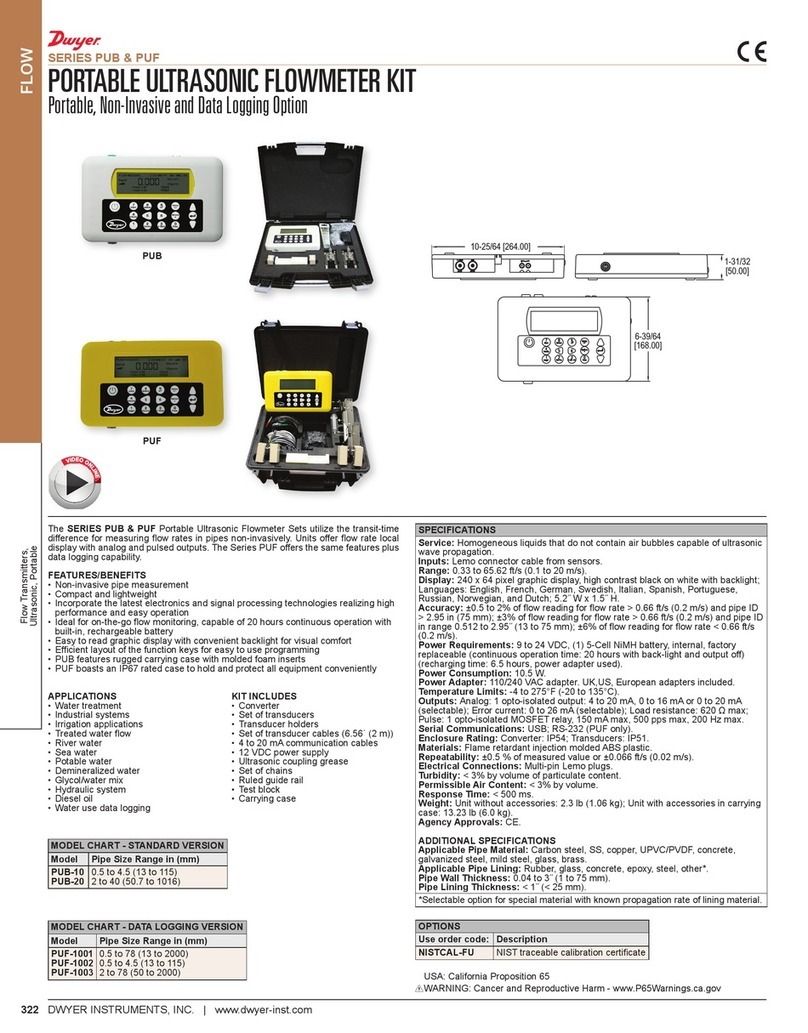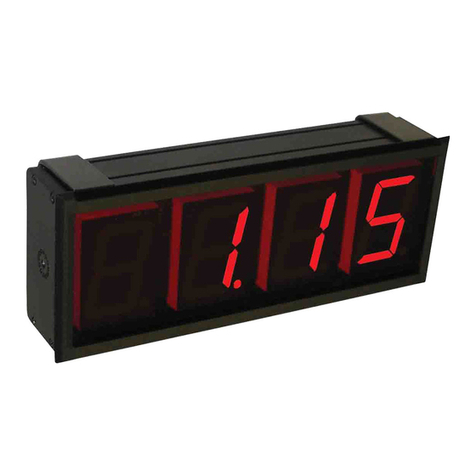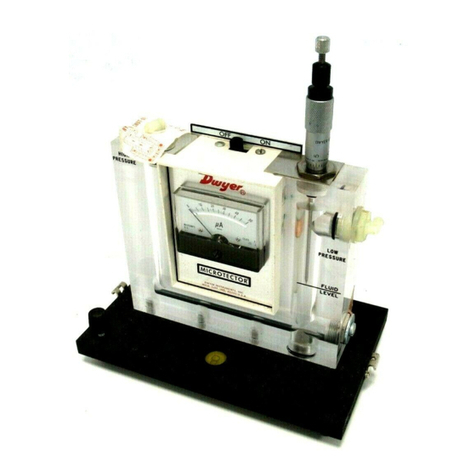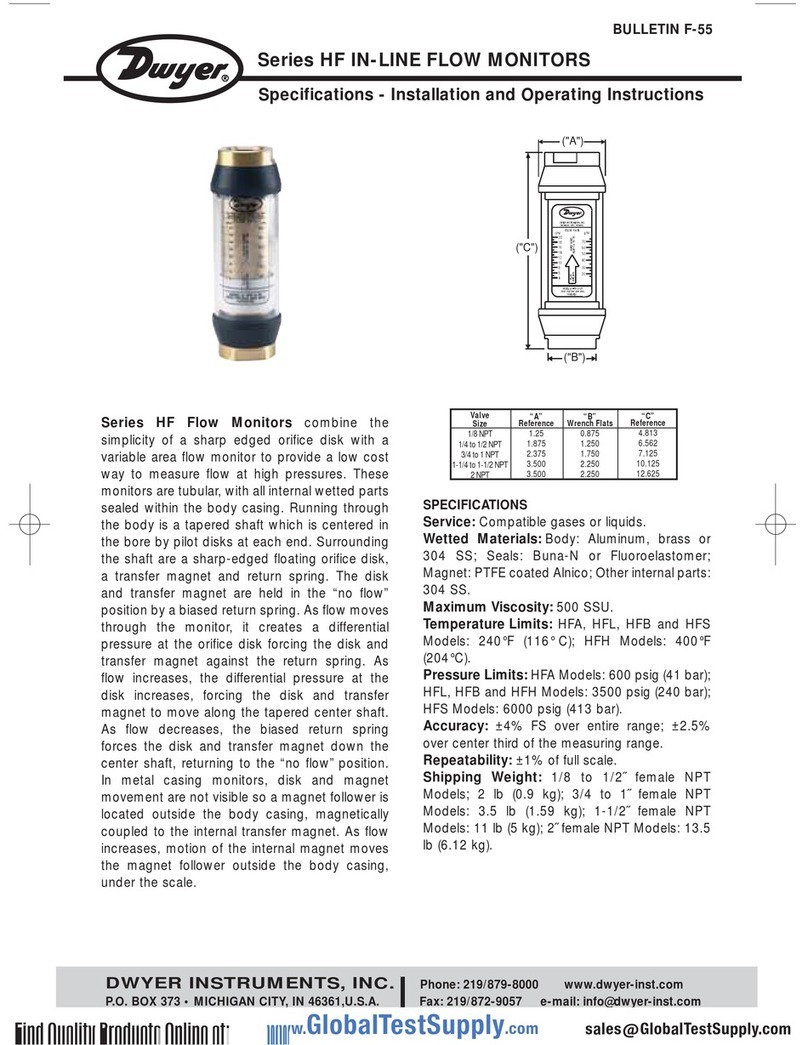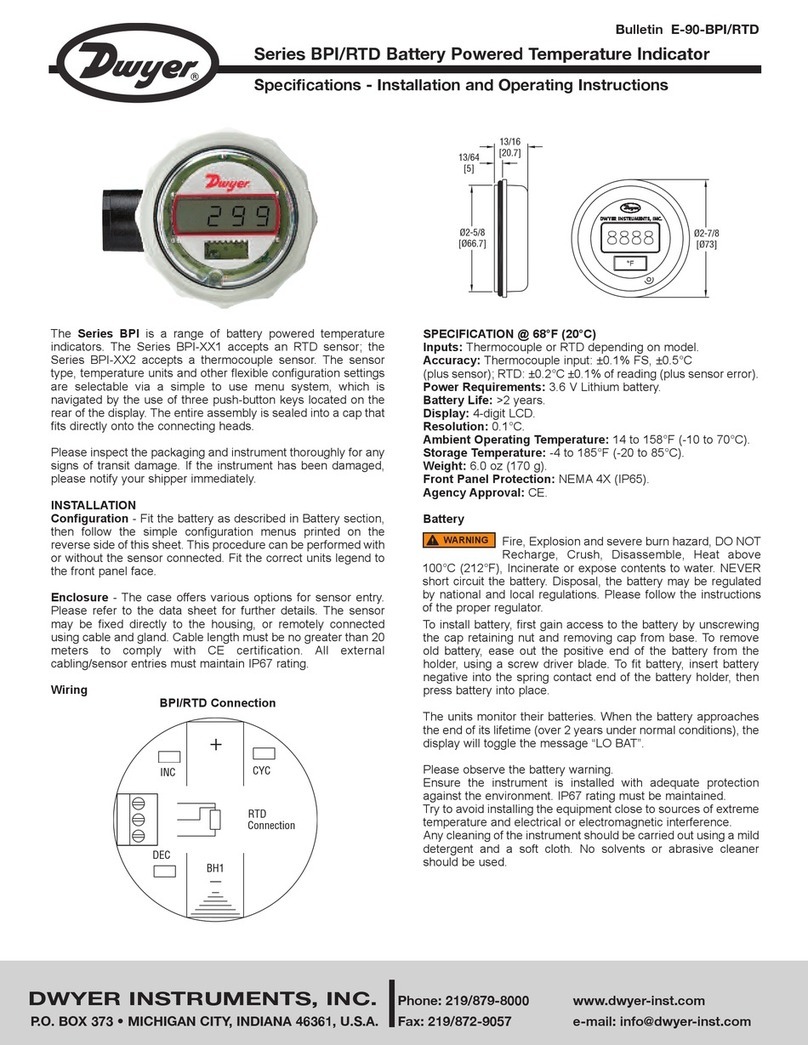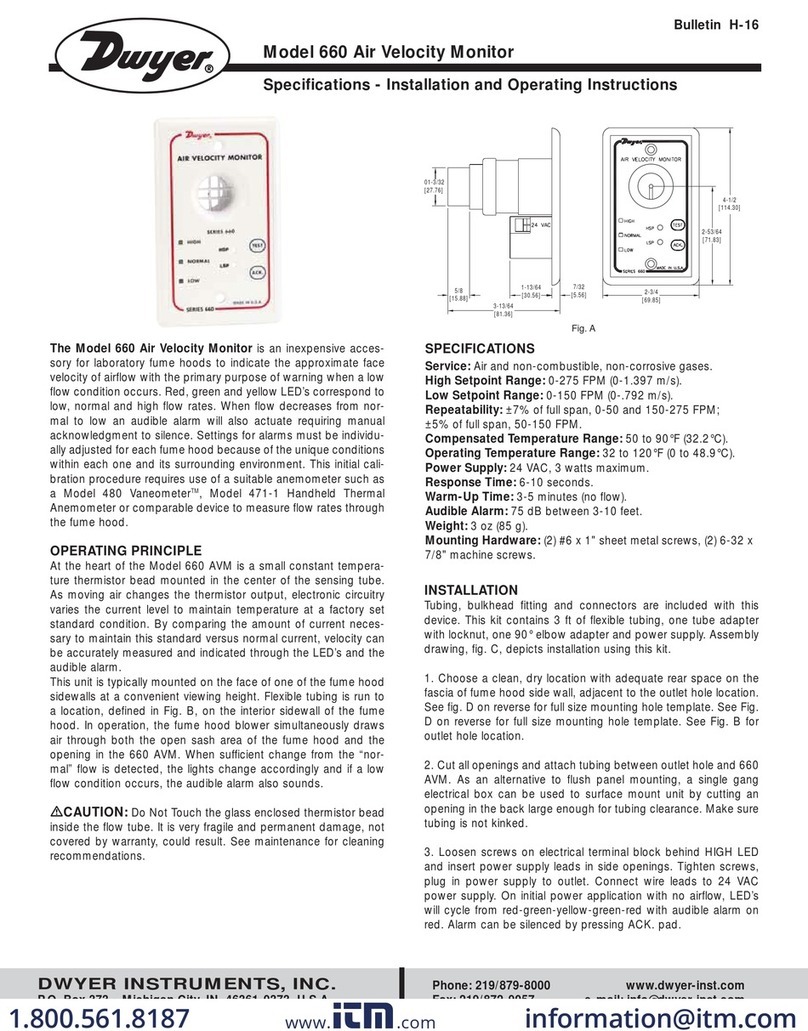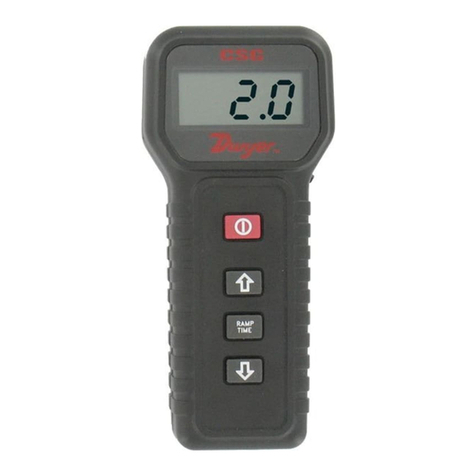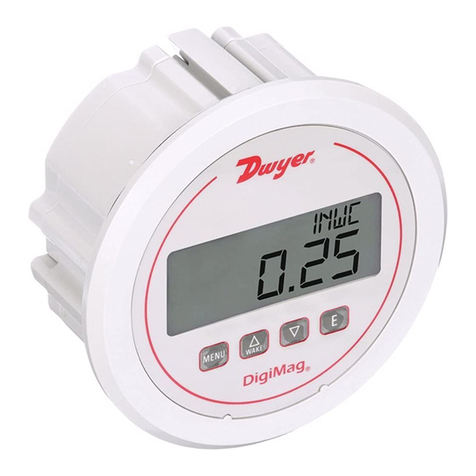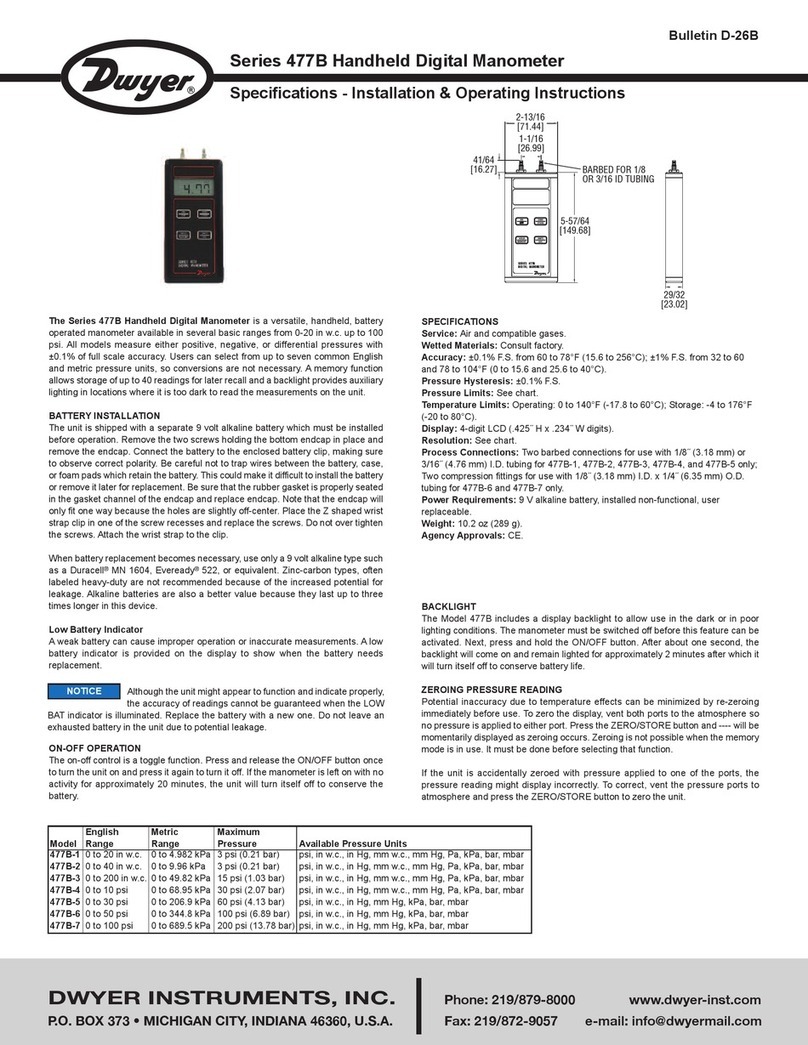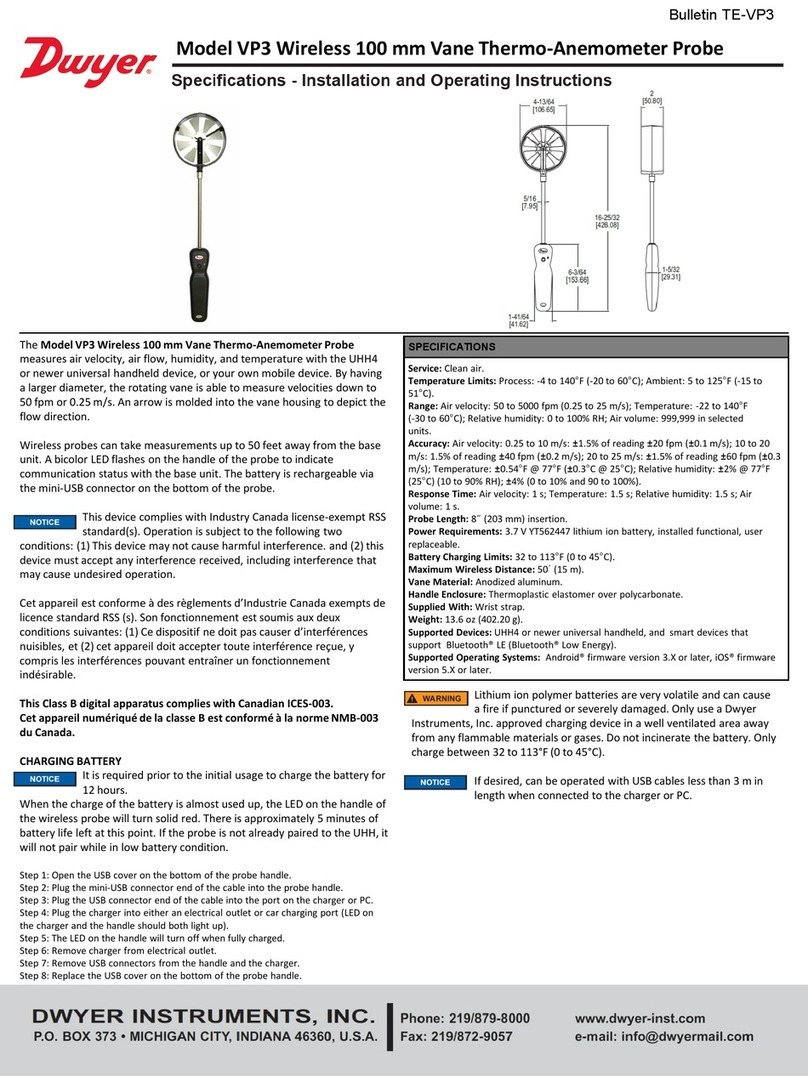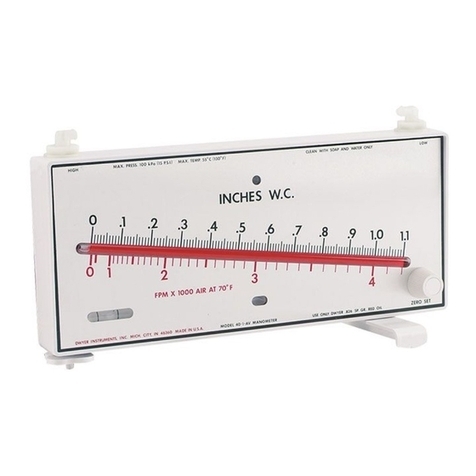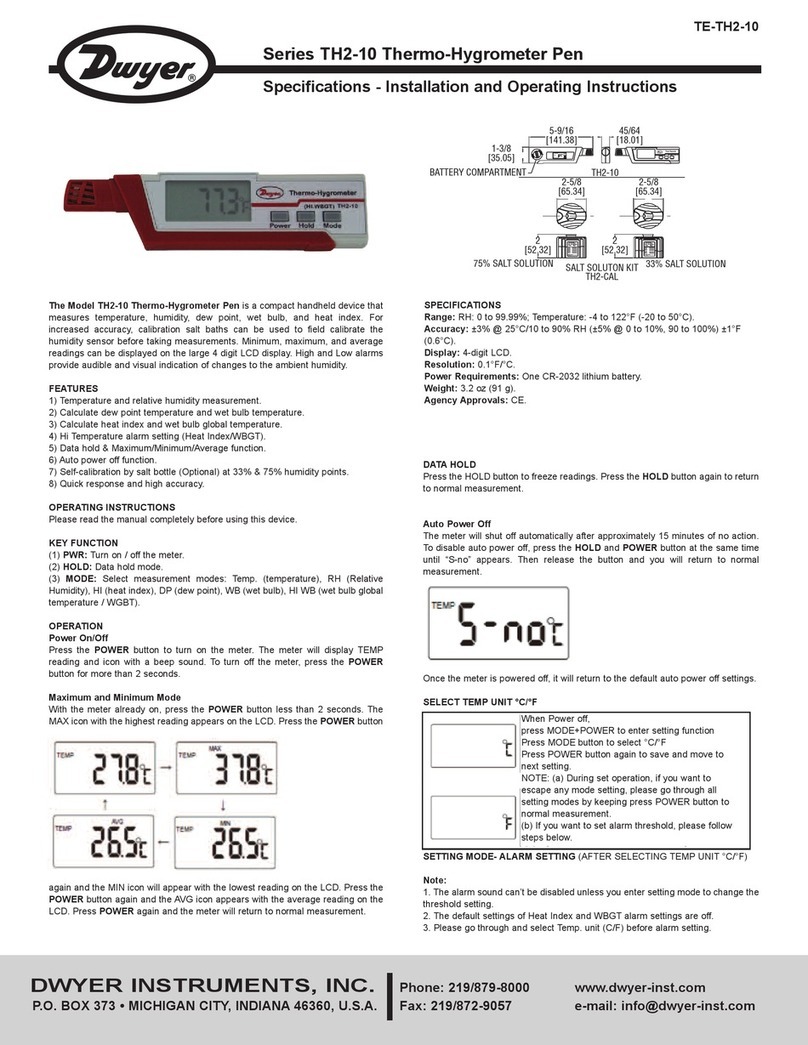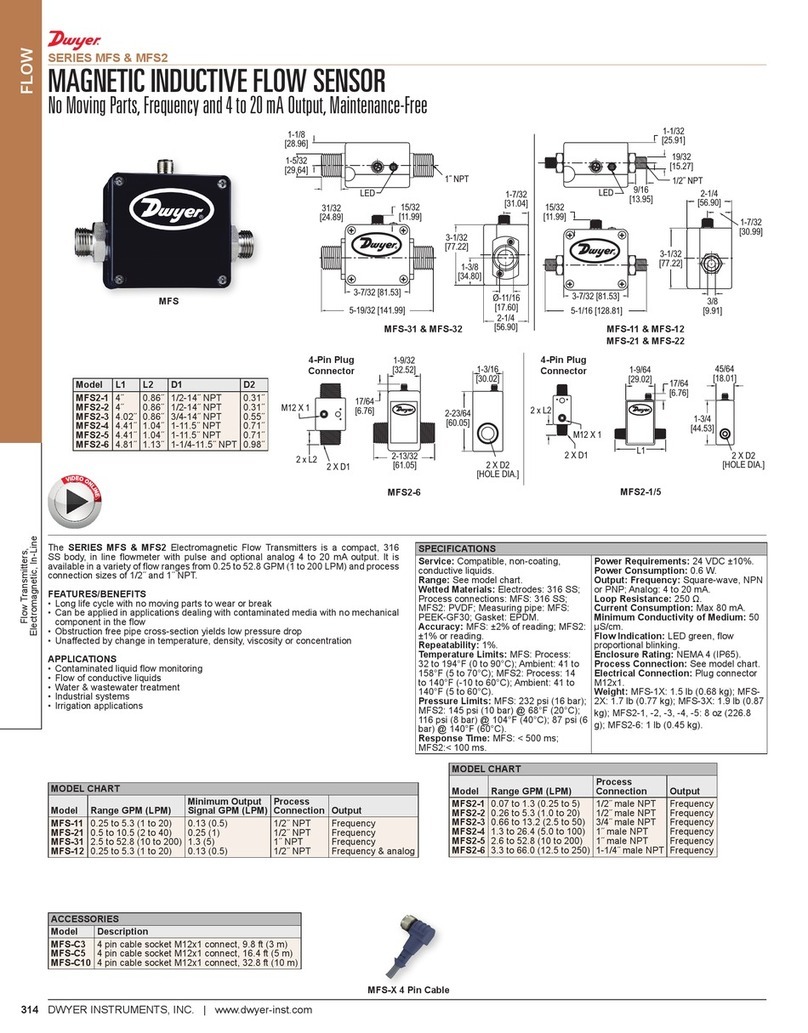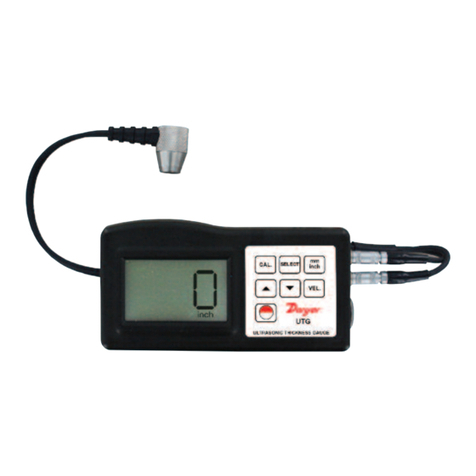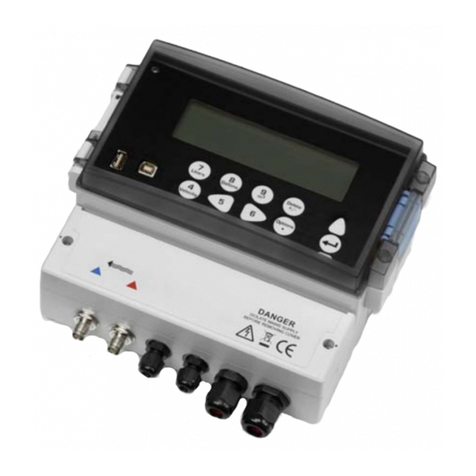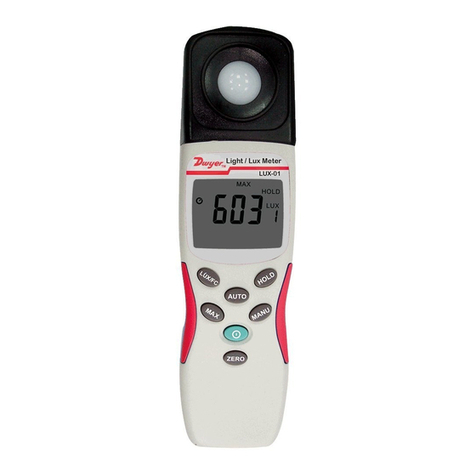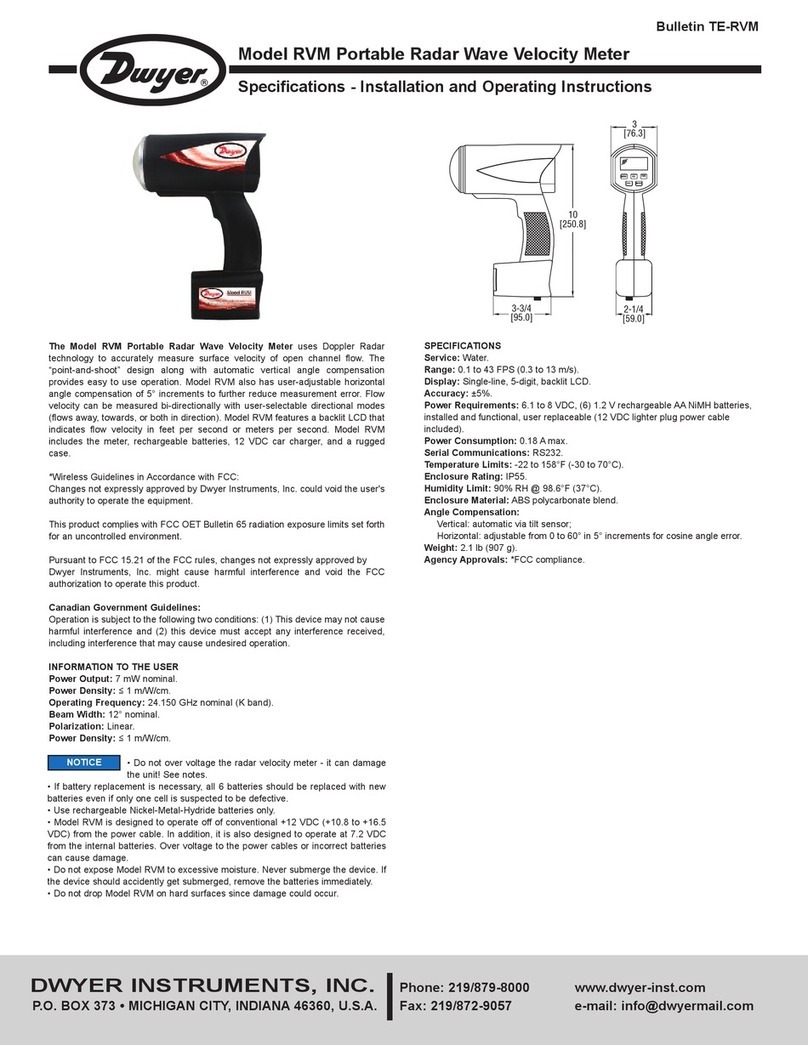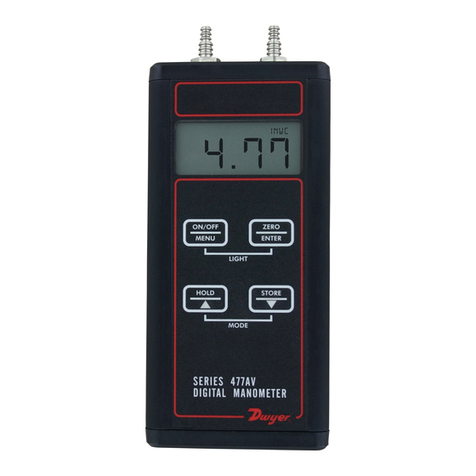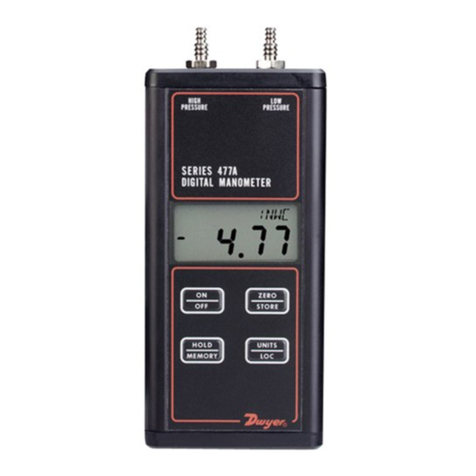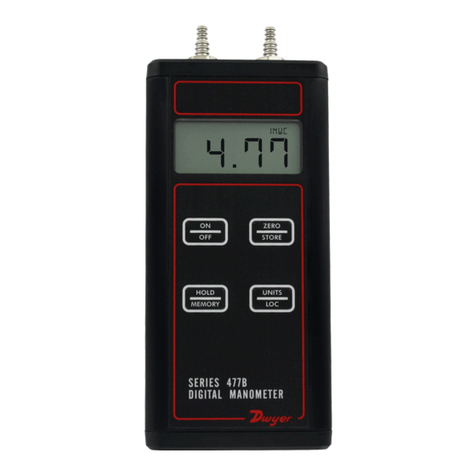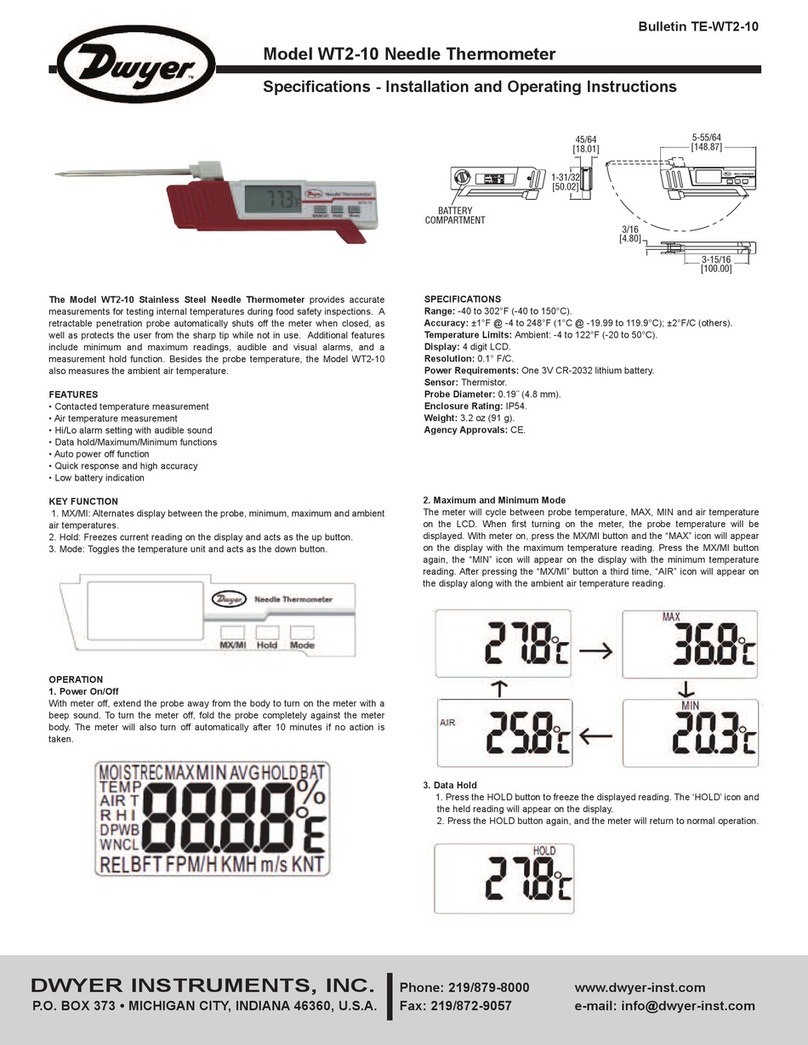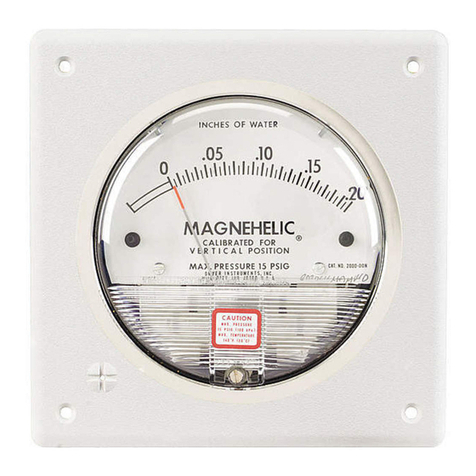
totalizers. When either of these options are selected, the totalizer
will start or stop functioning. It does not zero the total, this is a
separate function described below.
Reset + Total/- Total
The UF35 has a forward and reverse totalizer that can be reset
when this facility is selected. Use the scroll keys to select and
press ENTER to reset. The total is stored when the unit is
switched off or battery goes flat, therefore it may need to be reset
before each use.
Damping (sec)
This facility is used when the flow readings are unstable due to
the turbulence caused by obstructions, bends, etc. Damping or
averaging can be used to make the readings more stable. It can
be set to up-date the display, anything between 3 and 100 sec-
onds.
Calibration Factor
If for any reason the instrument goes out of calibration and the
readings may be higher or lower than normal, this facility enables
the user to correct the reading. If, for example, the reading is 4%
higher than normal, then entering 0.96 will reduce the reading by
4%. If the reading is 4% lower than normal, then entering 1.04
could increase the reading by 4%.
When the instrument is supplied it will always default to 1.00, and
when this is changed it will stay in the memory to whatever it has
been changed to, until such time as it needs to be changed
again.
Correction Factor
This is a facility that can be used when errors occur due to lack
of straight pipe or the sensors have been placed too close to a
bend (this could give an incorrect reading to what is expected).
The user can set this as a % in the same way as the calibration
factor, but it will not be stored in the memory.
DIAGNOSTICS
Calculated µs
This is a valve the instrument predicts will be the time in µsecs
that it should take for the transmitted signal to go across a par-
ticular pipe size. This value is ascertained from the data entered
by the user, i.e. Pipe size, material, sensor set, etc.
Up µs, Dn µs
This is the actual transit time measured by the instrument and will
be slightly (5-10 µs depending on the pipe size and signal condi-
tion) less than the calculated value above.
Measurement µs
A point in the signal is transmitted where the flow is taken from.
It is used to see if the signal is being taken from the burst at the
correct time to get the strongest signal. It is normally used on
smaller pipes when the instrument is being used in double or
triple bounce as signals can sometimes interfere with each other.
This value is normally a few µs below the Up µs, Dn µs value.
Phase up/dn µs
Only valid if Calculated µs and Up µs, Dn µs are correct. If the
reading is zero, then there is no signal, which could mean the
pipe is empty or the liquid is contaminated with particles or air.
Phase offset
This value will be between 0 and 15. The exact value is not
important and will vary between applications. It should, however,
be stable when the flow condition is good and velocity is within
the range of the transducers being used. As the flow rate
increases toward and beyond the maximum, this figure will con-
tinuously change. In flow mode the instrument will read unstable
or high flow.
Flow (m/s)
This displays flow velocity in m/sec to 3 decimal places.
Signal
This is the average value of Signal up/dn and is a value between
800 and 2400 which displays the signal’s strength as a percent-
age (800=0%, 2400=86%).
Signal up/dn
This value is internal to the electronics and must be greater than
800. There is an option in the SETUP INSTRUMENT menu to
allow this value to be taken down to 400 in extreme circum-
stances and is useful on some applications when the signal levels
are poor.
Sensor separation
This is a reminder for the user to check for correct sensor sepa-
ration and sensor mode.
STATUS/ERROR/WARNING MESSAGES
There are three types of messages that will appear: Status, Error,
and Warning. These messages appear under the time and date
on the display when in flow mode.
Status Messages
S1: initializing
Appears when first entering flow mode to show that the instru-
ment is starting up.
Error Messages
E1: UNSTABLE OR HIGH FLOW
This error message occurs when either the sensors have been
positioned too near an obstruction or bend, causing turbulence,
or the instrument is being used outside its normal flow range.
When the instrument is programmed, the user is informed of the
maximum flow rate that is possible to measure, and if this is
exceeded the high flow message occurs.
It may be possible to get around these problems by moving the
sensors to a straighter length of pipe, or, in the case of high
flows, another set of transducers may be used.
E2: NO FLOW SIGNAL
This message appears when the two transducers cannot send or
receive signals, which could happen for various reasons. First,
check that all cables are connected and transducers are on the
pipe correctly with grease on the face.
The no flow signal will show if the pipe is empty or partially filled.
when the liquid is aerated, when the particulate content of that
liquid is too high, or if the grease has not been applied to the
transducers and the condition of the pipe being measured is
poor.
Warning Messages
UF35 bulletin 6/13/03 10:50 AM Page 5
